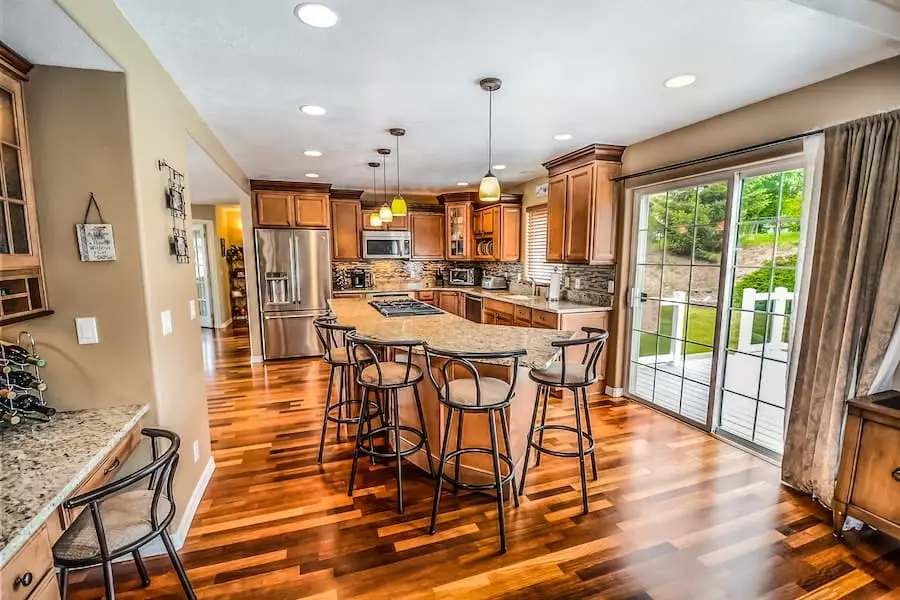Transform Any Room With The Best Architectural Lighting Principles
Share

Architectural lighting design has a significant impact on the well-being of the occupants. The presence of natural daylight in a room can positively affect psychological and physiological aspects. On the other hand, incorrect illumination choices can negatively affect an individual’s perception of space. Depending on the room’s function, inappropriate design can hinder performance and affect one’s perception of the space.
Architectural Lighting Design Principles:
Function
Lighting design is an important aspect of any space, as it ensures that the room is well-lit enough for people to move around safely and sets the mood and tone. A well-designed illumination plan can make a room feel warm and inviting or cool and modern, depending on the desired effect.
Aesthetics
Lighting design must prioritize function, but aesthetics are also important. Skilled designers can balance psychological and physical impacts without impairing functionality. Daylighting and its impact are critical elements in creating exceptional architecture.
Energy Efficiency
Architects today have an important responsibility to prioritize sustainable lighting systems. Energy-efficient illuminating options, such as LED bulbs and passive daylighting systems, are used to maximize natural light in buildings. By doing so, architects can contribute to reducing the carbon footprint of buildings and promoting energy conservation.
Primary Types Of Architectural Lighting
General Lighting
Depending on the location, different types of lighting are needed. For instance, in shops, the light should emphasize the uniqueness of the products. In offices, it should not interfere with employees’ work and should be enough for comfortable work. There should be more subdued restaurants, cafes, and bars, and the type should depend on the interior design.
Ambient Lighting
Soft ambient light is indirect and, therefore, softer than a general one. It doesn’t usually use downlighting, so it doesn’t create unflattering shadows. Examples of ambient illumination include eyeball spotlights, wall sconces that wash a wall with light, backlit perspex paneling, and concealed coffer fixtures that throw light onto a ceiling.
Task Lighting
Task lighting needs to have a stronger wattage than most other types of illumination. It should always be combined with adequate ambient light to avoid eye strain caused by the sharp contrast from light to dark areas.
Mood Lighting
Mood lighting is as important to the overall look of a room as general and ambient ones. It creates pools of light that counteract the shadows caused by general lighting, making a room pleasantly inviting.
Accent Lighting
Accent lighting is a great way to enhance the aesthetic appeal of a room. It is especially useful for highlighting objects like artwork, sculptures, and cabinets. Providing an additional layer of illumination prevents these items from being lost in an under-illuminated space. Spotlights are one example of accent illumination that can draw attention to specific objects or areas of a room.
Common Forms Of Architectural Lighting
Architectural lights can be implemented in various forms to provide amazing ambient, accent, task, and decorative lighting. Four common forms are cove, perimeter, valance, and daylighting.
Cove Lighting
In indirect interior lighting, cove illumination bounces even light onto ledges, recesses, ceilings, or upper walls. Incandescent or fluorescent lamps can be used, but LED strips and fixtures are a more energy-efficient way to add accents and color to your rooms.
Perimeter Lighting
With perimeter lighting, architectural perimeters are defined with accent lights. By establishing a glowing transition where the wall meets the ceiling, LED perimeter fixtures can create contrast between light at the center and outer edges of a room and the darker spaces in between.
Valance Lighting
An indirect lighting fixture is concealed behind a wooden, metal, or glass valance when it is used as valance lights. It is ideal for bedrooms, kitchens, and living rooms because the top acts as a cove and the bottom as a soffit. It generally runs along a wall and is perfect for both directions.
Daylighting
A daylight-responsive lighting system is an innovative technology that uses the natural light from the sun to brighten up your home or office space. This type of illumination works by incorporating exterior glazings such as windows and skylights into the design of the building, allowing natural light to enter the space during the day.
Conclusion
Architectural lighting design is a crucial aspect of any space. By prioritizing function, aesthetics, and energy efficiency, designers can create exceptional architecture that positively impacts the well-being of the occupants. Understanding the primary types and common forms of architectural illumination, such as general, ambient, task, mood, and accent, allows designers to create a balanced illumination plan that meets the specific needs of each space. Incorporating natural daylighting systems, such as daylight-responsive fixtures, can further enhance the energy efficiency and sustainability of a building.













